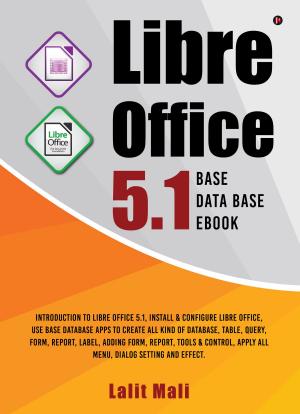| Author: | Dr Vidhya Srinivasan | ISBN: | 9781946515353 |
| Publisher: | Notion Press | Publication: | January 5, 2017 |
| Imprint: | Notion Press | Language: | English |
| Author: | Dr Vidhya Srinivasan |
| ISBN: | 9781946515353 |
| Publisher: | Notion Press |
| Publication: | January 5, 2017 |
| Imprint: | Notion Press |
| Language: | English |
The thinking on Human Resource Development (HRD) practices has been evidenced for the last one and a half decades. However the pace and volume of change has forced HR managers to meet complex challenges like globalization, a diverse workforce and informed expectations for training learning and development. Both organizations and employees benefit from HRD interventions because an organization’s success critically depends on the levels of employee skills and motivation.
The HRD Almanac looks at 4 broad focus areas of HR practices, that are Strategy centric, Organizational alignment related, Employee Empowerment focused, and the Learning Training and Development angle. The author weaves together 25 detailed chapters spanning the gamut of the HRD function.
The writing is aligned on a uniform pattern providing answers to the What, consisting of Definitions and Descriptions of the theme, Why, Consisting of Concept Clarifications, Where, the role of the Human Resources department and How, an authentication of data obtained through a pilot study on HR practitioners across industry sectors.
The HRD Almanac is a factual compendium of literature, concepts, organizational experiences, and perceptions on some of the most important HRD efforts and will serve as an appropriate and excellent handbook for young and potential HR functionaries.
The HRD Almanac looks at 4 broad focus areas of HR practices, that are Strategy centric, Organizational alignment related, Employee Empowerment focused, and the Learning Training and Development angle. The author weaves together 25 detailed chapters spanning the gamut of the HRD function.
The writing is aligned on a uniform pattern providing answers to the What, consisting of Definitions and Descriptions of the theme, Why, Consisting of Concept Clarifications, Where, the role of the Human Resources department and How, an authentication of data obtained through a pilot study on HR practitioners across industry sectors.
The HRD Almanac is a factual compendium of literature, concepts, organizational experiences, and perceptions on some of the most important HRD efforts and will serve as an appropriate and excellent handbook for young and potential HR functionaries.
The thinking on Human Resource Development (HRD) practices has been evidenced for the last one and a half decades. However the pace and volume of change has forced HR managers to meet complex challenges like globalization, a diverse workforce and informed expectations for training learning and development. Both organizations and employees benefit from HRD interventions because an organization’s success critically depends on the levels of employee skills and motivation.
The HRD Almanac looks at 4 broad focus areas of HR practices, that are Strategy centric, Organizational alignment related, Employee Empowerment focused, and the Learning Training and Development angle. The author weaves together 25 detailed chapters spanning the gamut of the HRD function.
The writing is aligned on a uniform pattern providing answers to the What, consisting of Definitions and Descriptions of the theme, Why, Consisting of Concept Clarifications, Where, the role of the Human Resources department and How, an authentication of data obtained through a pilot study on HR practitioners across industry sectors.
The HRD Almanac is a factual compendium of literature, concepts, organizational experiences, and perceptions on some of the most important HRD efforts and will serve as an appropriate and excellent handbook for young and potential HR functionaries.
The HRD Almanac looks at 4 broad focus areas of HR practices, that are Strategy centric, Organizational alignment related, Employee Empowerment focused, and the Learning Training and Development angle. The author weaves together 25 detailed chapters spanning the gamut of the HRD function.
The writing is aligned on a uniform pattern providing answers to the What, consisting of Definitions and Descriptions of the theme, Why, Consisting of Concept Clarifications, Where, the role of the Human Resources department and How, an authentication of data obtained through a pilot study on HR practitioners across industry sectors.
The HRD Almanac is a factual compendium of literature, concepts, organizational experiences, and perceptions on some of the most important HRD efforts and will serve as an appropriate and excellent handbook for young and potential HR functionaries.















